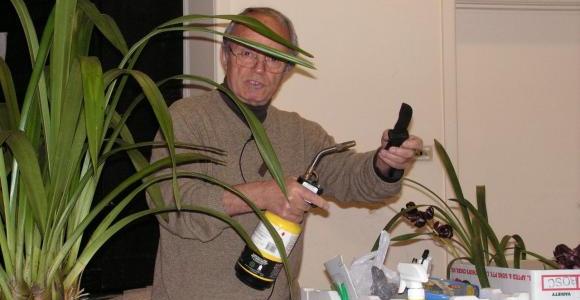
Cymbidium Orchids
You are here

Our guest speaker was our own John Guario, who explained that his love affair with orchids started when he was given a few plants by his Mother-in-law, who explained that they are very hard to grow.
Later, he attended an orchid show, which made him aware of their potential and beauty. John learnt a lot from experienced growers, taking note of their methods to ensure success.
Orchids have three basic needs – light, water and fertiliser. Over the years there have been changes in the methods but the one constant is the need for 50% light. An area that gets the morning sun is ideal, but serious growers will usually have a shade house.
The time to re-pot your orchids is in October – if they are still flowering, cut the flowers to put inside.
John is fastidious with hygiene when re-potting, using a blowtorch to sterilise his tools, fresh gloves and new pots for each plant and a mask to protect his health.
Remove the plant from the pot – you may have to cut the pot away. With a sharp, sterilised knife cut a third from the bottom of the roots and shake away the old potting mix. Remove any soft roots and rinse the plant thoroughly.
Divide the plant, with at least two spikes and a back bulb – if you have three spikes or more the back bulb can be removed.
These back bulbs can be potted up in small pots and will produce new plants, which will flower in approximately four years.
John uses a mixture of coconut fibre – reconstituted with water – and perlite, at a ratio of 1:4. Fill the pot two-thirds with this mixture, place the plant into the pot, top up and tap to remove air pockets. Continue to pot up and then fertilise with specific orchid food.
After re-potting, plants do not usually flower the following year.
John then showed members slides of his beautiful orchids, including dendrobiums and phaelenopsis, as well as his wonderful cymbidiums.







